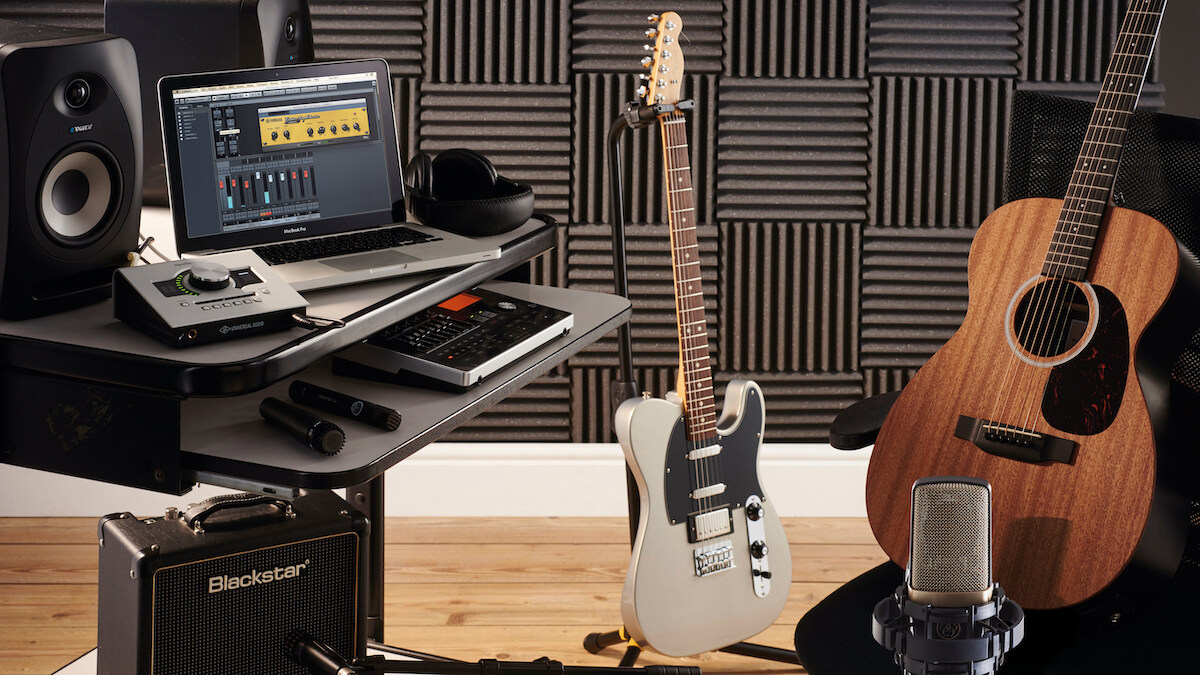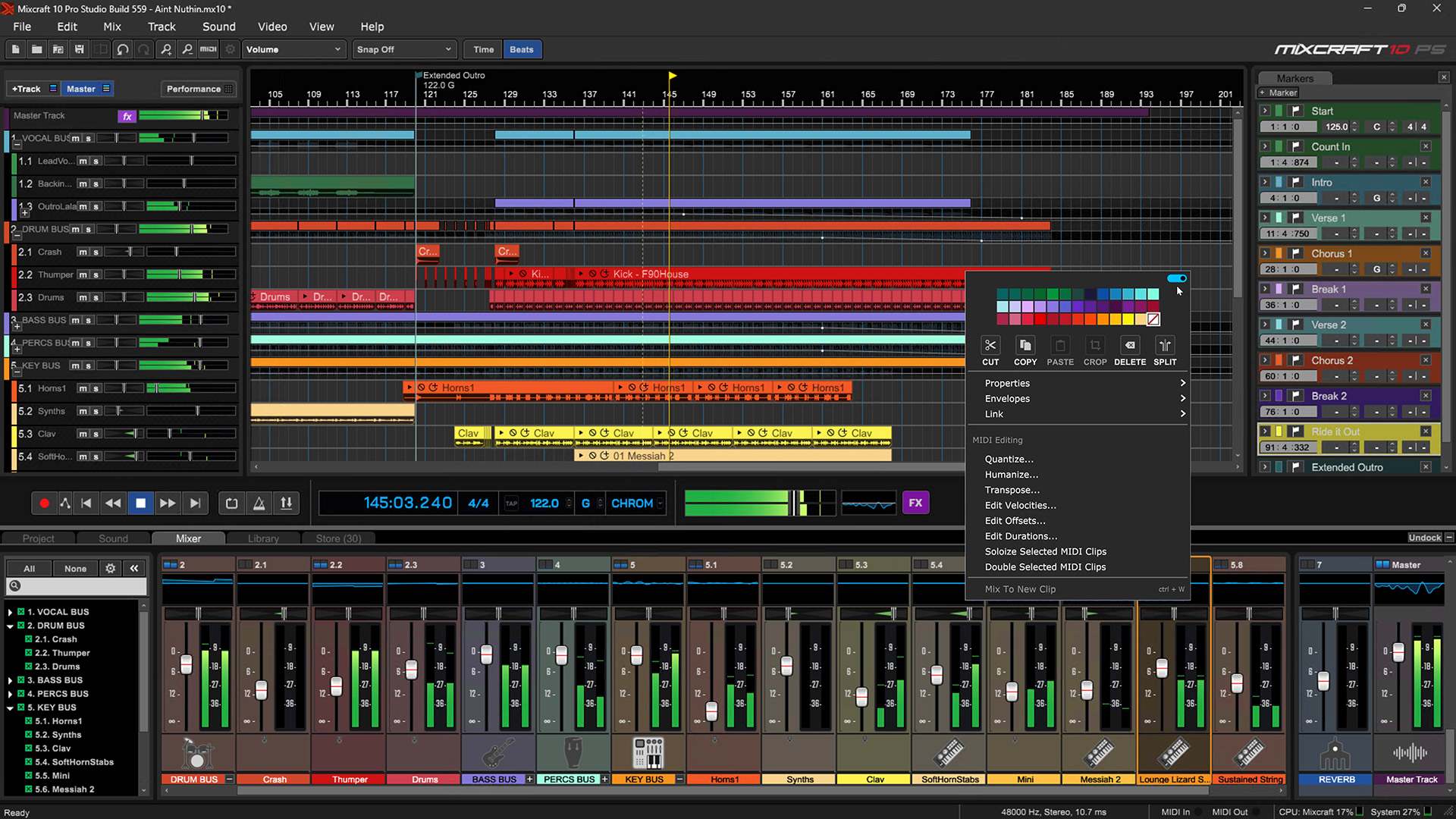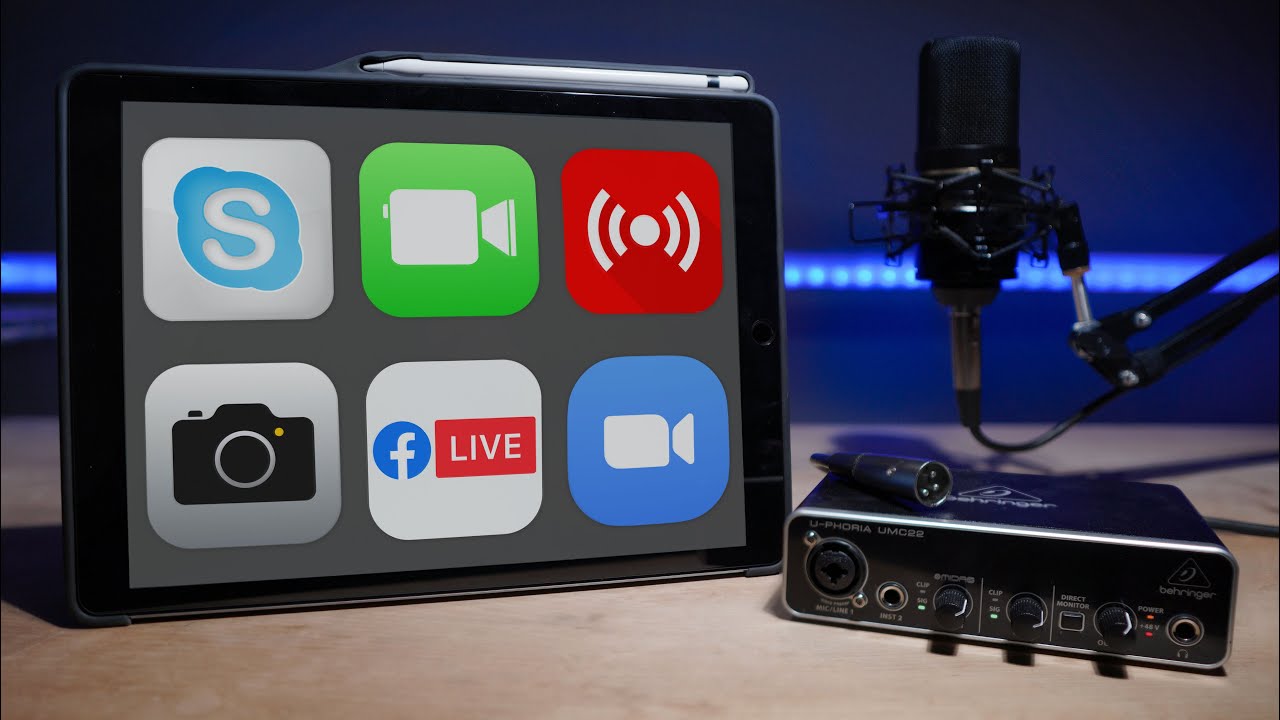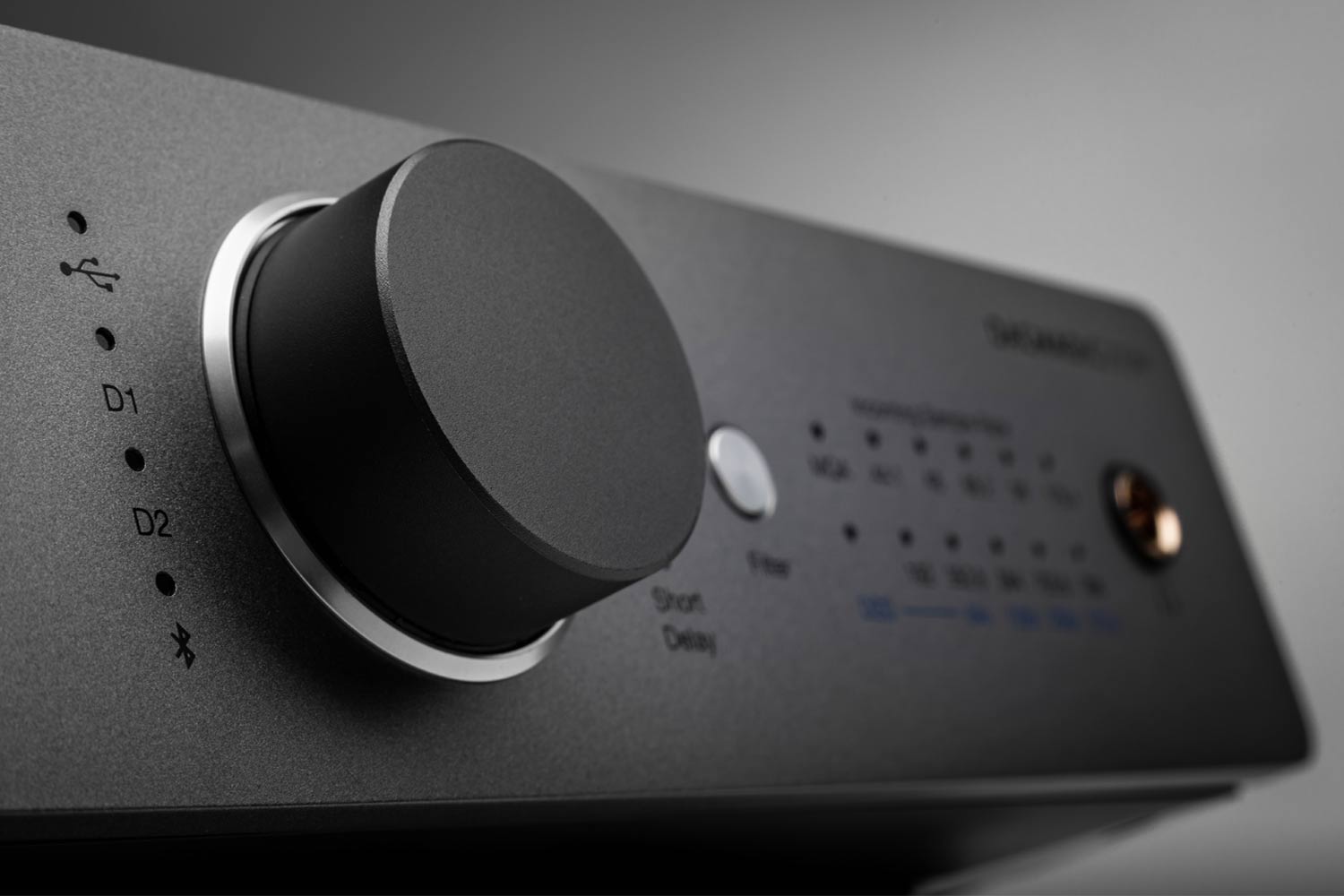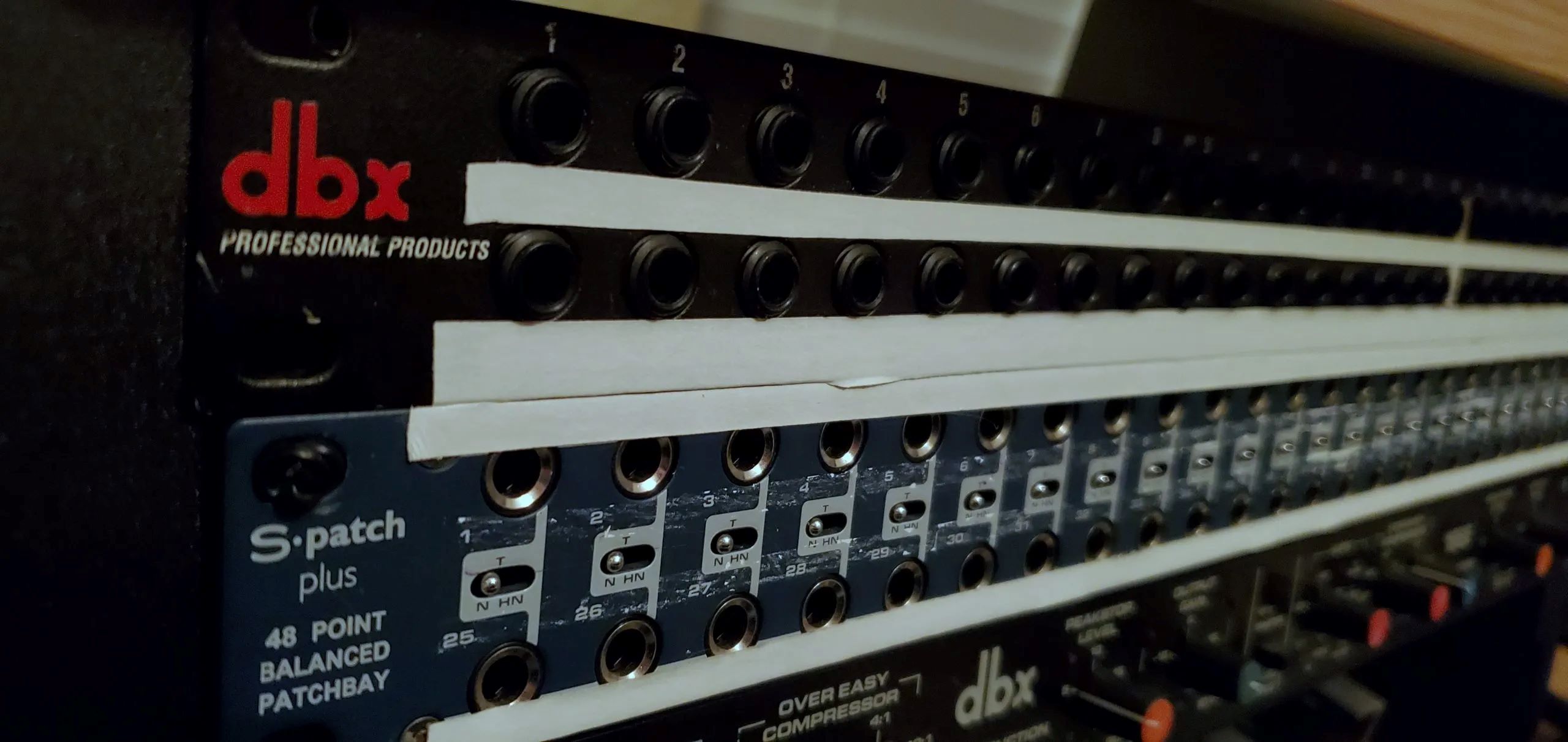Home>Production & Technology>Audio Interface>Should I Unplug Audio Interface When Not Using
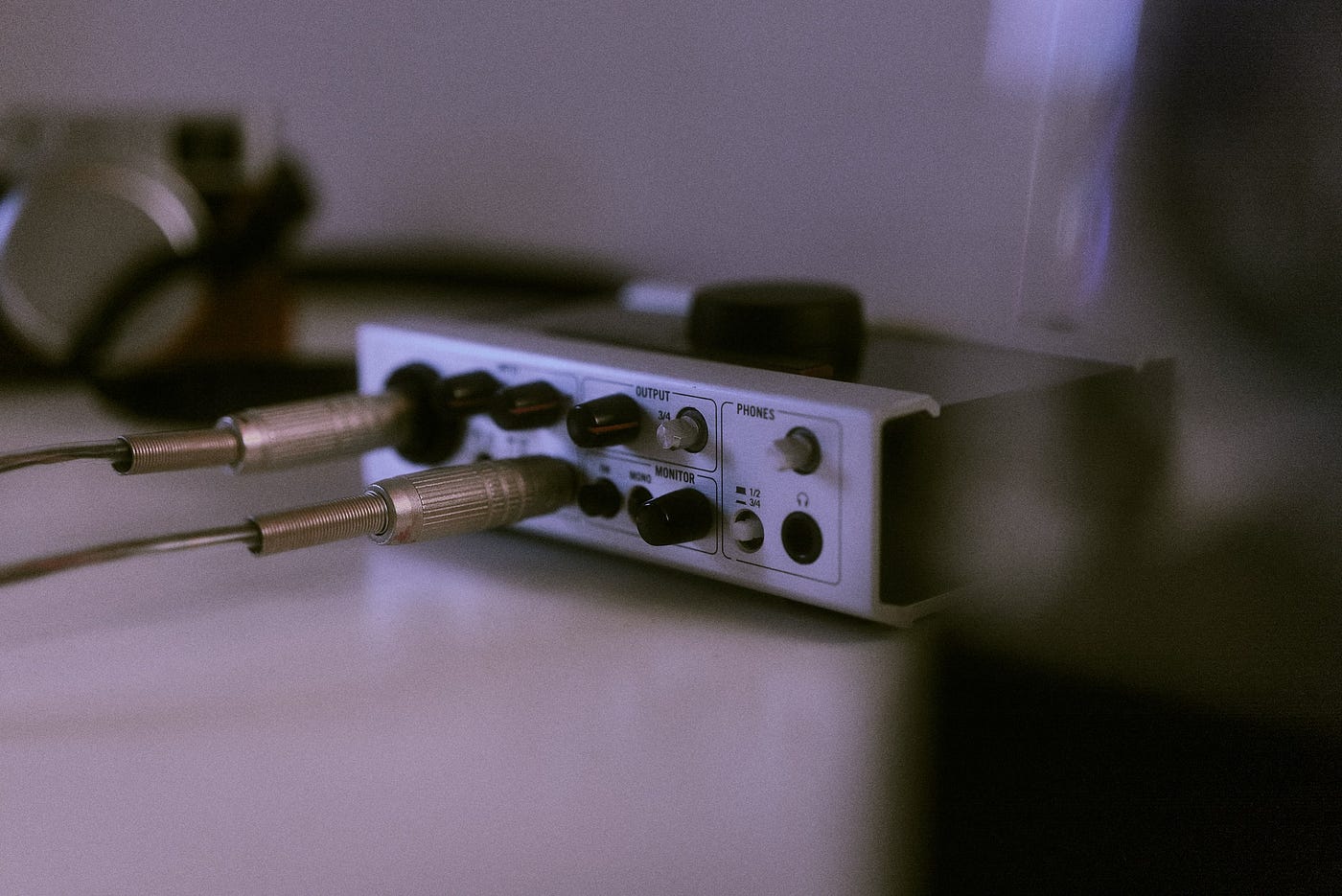

Audio Interface
Should I Unplug Audio Interface When Not Using
Published: February 4, 2024
Learn whether you should unplug your audio interface when not in use. Find out how it can prolong the lifespan and prevent potential issues.
(Many of the links in this article redirect to a specific reviewed product. Your purchase of these products through affiliate links helps to generate commission for AudioLover.com, at no extra cost. Learn more)
Table of Contents
Introduction
Welcome to the world of audio interfaces! If you’re a musician, podcaster, or anyone else involved in audio production, you probably already know how important these devices are. An audio interface serves as the link between your instruments or microphones and your computer, allowing you to record and play back high-quality audio.
With the increasing popularity of home studios and the rise of digital productions, audio interfaces have become a common tool for both professionals and enthusiasts. These devices provide an array of benefits, including improved audio quality, low-latency monitoring, and versatile connectivity options.
However, as with any electronic device, it’s important to consider how you should manage and maintain your audio interface. One common question that often arises is whether or not it’s necessary to unplug the audio interface when it’s not in use.
In this article, we will explore the topic of whether or not you should unplug your audio interface when you’re not using it. We’ll delve into the reasons behind potentially unplugging it, the benefits it can bring, the risks of leaving it plugged in, and provide recommendations based on industry best practices.
So, if you’ve ever wondered whether or not you should unplug your audio interface, keep reading to find out more!
Understanding Audio Interfaces
Before diving into whether or not you should unplug your audio interface, it’s essential to have a clear understanding of what these devices are and how they function.
An audio interface is a piece of hardware that acts as a bridge between your audio sources (such as microphones, instruments, or line-level devices) and your computer. It converts analog audio signals into digital data that can be processed by your computer’s audio software and vice versa. This conversion process ensures that your recordings and playback are of high quality and free from interference.
Audio interfaces come in various shapes and sizes, ranging from small portable units with a few inputs and outputs to larger desktop interfaces with multiple connectivity options. They typically connect to your computer via USB, Thunderbolt, or Firewire.
One of the primary purposes of an audio interface is to provide high-quality analog-to-digital and digital-to-analog conversion. This conversion is crucial for maintaining the integrity of your audio recordings and ensuring accurate playback. In addition to conversion, audio interfaces often offer features such as microphone preamps, headphone outputs, phantom power, MIDI connectivity, and more.
Whether you’re a musician recording your latest album, a podcaster delivering a professional-sounding show, or a content creator editing videos, an audio interface is an essential tool that can elevate the quality of your work.
Now that we have a basic understanding of what audio interfaces do, let’s explore the power consumption of these devices and how it relates to the decision of whether or not to unplug them when not in use.
Power Consumption of Audio Interfaces
When considering whether or not to unplug your audio interface, one factor to consider is its power consumption. Audio interfaces typically require power to function properly. The amount of power they consume depends on various factors such as the model, features, and the number of connected devices.
Most audio interfaces receive power directly from the USB or Thunderbolt connection to your computer. This means that as long as your computer is powered on, the audio interface will be receiving power. Some interfaces also have the option to be powered externally using an AC adapter.
The power consumption of an audio interface, especially when it’s idle or not actively transferring audio data, is relatively low. This means that leaving your interface plugged in while not in use does not significantly contribute to your overall electricity consumption.
However, it’s worth noting that some audio interfaces have additional features that may consume more power. For example, interfaces with built-in DSP (Digital Signal Processing) or hardware monitoring capabilities may require more power to operate. In such cases, it’s essential to review the specifications and power requirements of your specific audio interface.
In terms of eco-friendliness and energy conservation, it may be advisable to unplug your audio interface if you’re conscious about minimizing energy usage. By disconnecting it when not in use, you can reduce the standby power consumption and contribute to a greener environment.
Now that we understand the power consumption aspect, let’s delve into the benefits of unplugging your audio interface.
Benefits of Unplugging Audio Interfaces
While audio interfaces generally have low power consumption when left plugged in, there are still some benefits to consider when it comes to unplugging them when not in use.
1. Energy Conservation: Unplugging your audio interface when it’s not actively being used can contribute to energy conservation and reduce your overall electricity consumption. This aligns with efforts to minimize our environmental impact and promote sustainability.
2. Extended Lifespan: Electronics, including audio interfaces, are subject to wear and tear over time. By unplugging your interface when it’s not in use, you reduce the amount of time it spends connected to a power source, which can help extend its lifespan.
3. Electrical Noise Reduction: Leaving your audio interface plugged in can sometimes expose it to electrical noise that can affect the audio signal quality. By unplugging the interface, you eliminate the possibility of interference from other electronic devices or power fluctuations in the electrical system.
4. Convenience and Organization: Unplugging your audio interface when not in use can help keep your workspace clean and uncluttered. It also allows you to easily disconnect and move the interface if needed, providing flexibility in your setup.
5. Improved System Stability: In some cases, leaving an audio interface connected for extended periods without rebooting your computer may cause stability issues. By unplugging and reconnecting the interface periodically, you can help maintain a more stable system performance.
It’s important to note that these benefits may vary depending on the specific circumstances and the type of audio interface you’re using. It’s always a good idea to refer to the manufacturer’s recommendations and guidelines to ensure that you’re using and maintaining the device in the best possible way.
Now, let’s explore the potential risks of leaving your audio interface plugged in for extended periods.
Risks of Leaving Audio Interfaces Plugged In
While leaving your audio interface plugged in may not pose significant risks, there are a few potential drawbacks to consider:
1. Power Surges: Electrical surges, whether caused by lightning strikes or power fluctuations, can potentially damage electronic devices. Although relatively rare, a power surge has the potential to affect your audio interface if it’s left connected during such an event.
2. Risk of Accidental Damage: Leaving your audio interface plugged in increases the chances of accidental damage. This could include knocking it over, spilling liquid near the device, or inadvertently pulling on cables that are still connected. Unplugging the interface when not in use reduces the likelihood of these accidents.
3. Heat Build-up: Depending on the design and ventilation of your audio interface, leaving it plugged in for extended periods can contribute to heat build-up. While this is not a widespread issue, elevated temperatures may potentially affect the longevity and performance of the device.
4. Power Consumption: Although the power consumption of audio interfaces when idle is typically low, leaving them plugged in can still contribute to your overall energy consumption. If you’re aiming to minimize energy usage and reduce your carbon footprint, unplugging the interface when not needed can help achieve that goal.
5. Data Security: In certain situations where your computer is left unattended and there is a risk of unauthorized access, leaving the audio interface connected may provide an additional access point to your system. While the risk is relatively low, it’s worth considering in scenarios where security is a top priority.
Ultimately, the risks associated with leaving your audio interface plugged in are relatively minimal. However, being aware of these potential drawbacks can help you make an informed decision about whether or not to unplug your device when it’s not in use.
Now, let’s move on to some recommendations regarding the practice of unplugging audio interfaces.
Recommendations for Unplugging Audio Interfaces
Based on the factors discussed earlier, here are some recommendations regarding the practice of unplugging audio interfaces:
1. Consider your usage frequency: If you regularly use your audio interface and it’s an integral part of your setup, it may be more convenient to leave it plugged in. However, if you only use it occasionally or for specific projects, it may be worth unplugging it when not in use.
2. Assess power consumption and energy conservation: If you’re conscious about energy conservation and minimizing your electricity usage, you may choose to unplug your audio interface when it’s not actively being used. This can make a small contribution to reducing your overall energy consumption.
3. Evaluate your workspace: Consider the physical space where your audio interface is located. If it’s in an area prone to spills, accidents, or where cables can easily be tripped over, it’s advisable to unplug the interface when not in use to reduce the risk of accidental damage.
4. Monitor power surges and electrical conditions: If you live in an area prone to electrical storms or power fluctuations, you may want to unplug your audio interface during such events to protect it from potential damage caused by power surges.
5. Implement periodic reboots: To maintain system stability, consider periodically rebooting your computer and disconnecting and reconnecting the audio interface. This can help prevent any potential conflicts or stability issues that may arise from leaving the interface continuously connected for extended periods.
6. Follow manufacturer’s recommendations: It’s crucial to consult the user manual or guidelines provided by the manufacturer of your audio interface. They may have specific recommendations regarding whether or not to unplug the device when not in use and any other maintenance practices to follow.
Remember that these recommendations may vary depending on the specific circumstances and requirements of your setup. It’s essential to assess your own needs and the characteristics of your audio interface to make an informed decision about whether or not to unplug it when it’s not in use.
Now, let’s conclude our discussion.
Conclusion
When it comes to whether or not to unplug your audio interface when it’s not in use, the decision ultimately depends on various factors. While leaving your audio interface plugged in may not pose significant risks, there are some benefits to consider when it comes to unplugging it.
Unplugging your audio interface can contribute to energy conservation, extend its lifespan, reduce electrical noise, improve system stability, and provide convenience and organization in your workspace. However, the risks associated with leaving the interface plugged in are relatively minimal, including potential damage from power surges, accidental damage, heat build-up, increased power consumption, and data security concerns in specific scenarios.
Ultimately, you should consider your usage frequency, power consumption, workspace conditions, and personal preferences when deciding whether or not to unplug your audio interface. It may be more convenient to keep it plugged in if you use it regularly or if it’s an essential part of your setup. On the other hand, if you only use it occasionally or if you’re concerned about energy conservation, it may be worthwhile to unplug the interface when it’s not in use.
Be sure to refer to the manufacturer’s recommendations and guidelines for your specific audio interface model to ensure you’re using and maintaining it correctly. Regularly assess your workspace, monitor for potential power surges, and consider periodic reboots to ensure system stability.
In the end, the decision of whether or not to unplug your audio interface is a personal one. Consider the benefits, risks, and recommendations discussed in this article to make an informed choice that aligns with your needs and preferences.
Remember, the primary goal is to enjoy the process of creating high-quality audio and to optimize the performance and longevity of your audio interface.
Happy unplugging (or not)!

